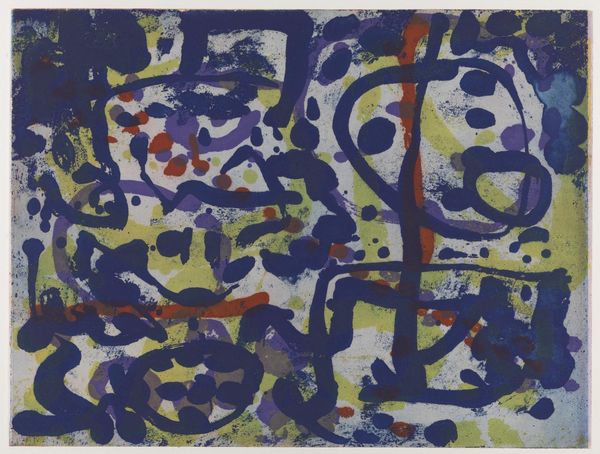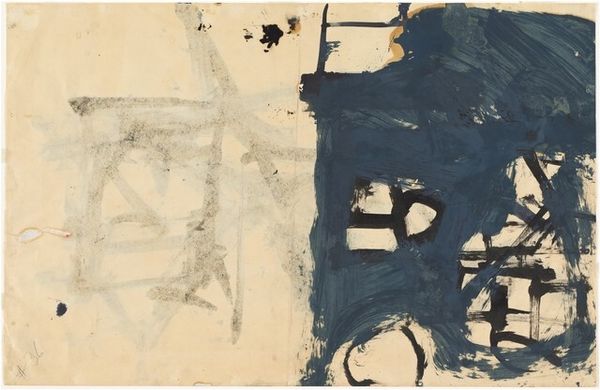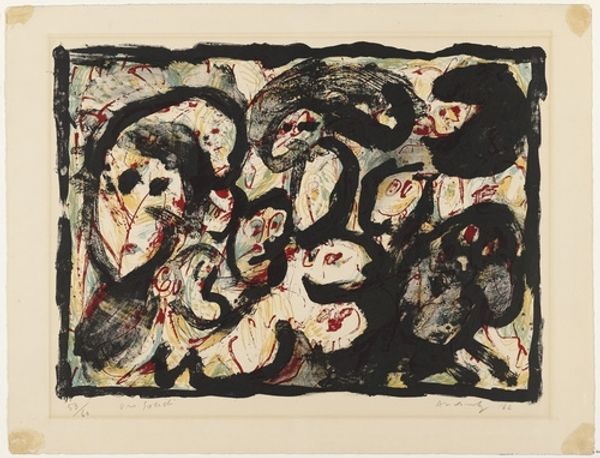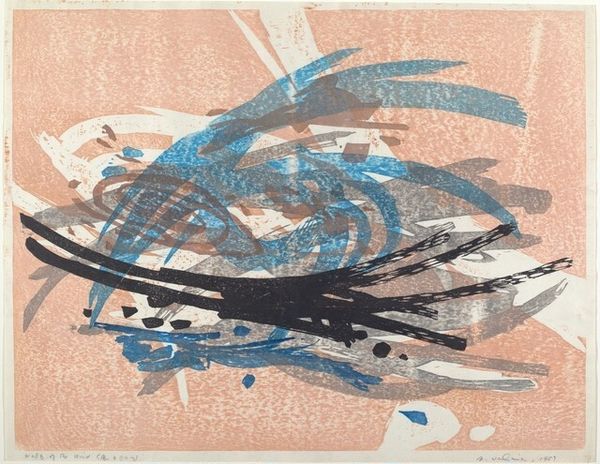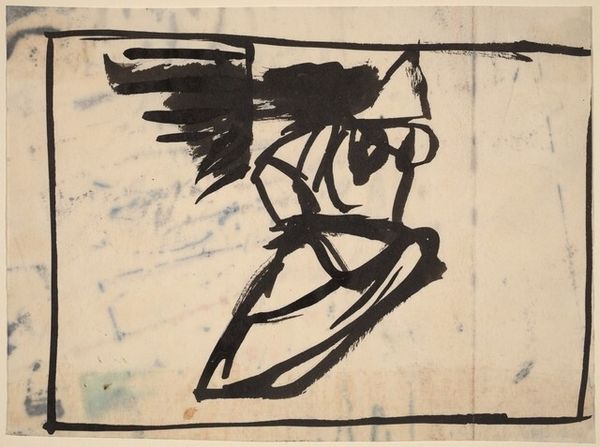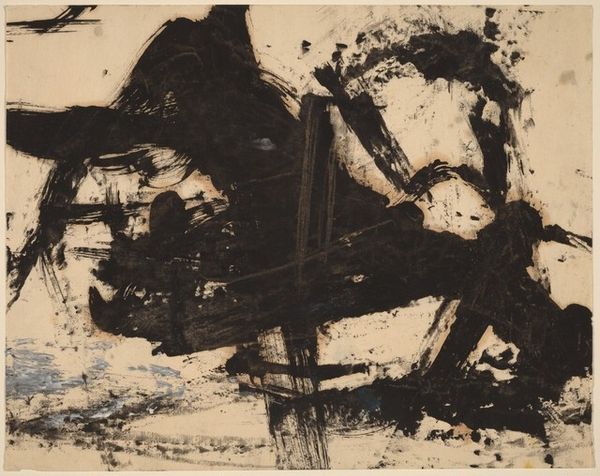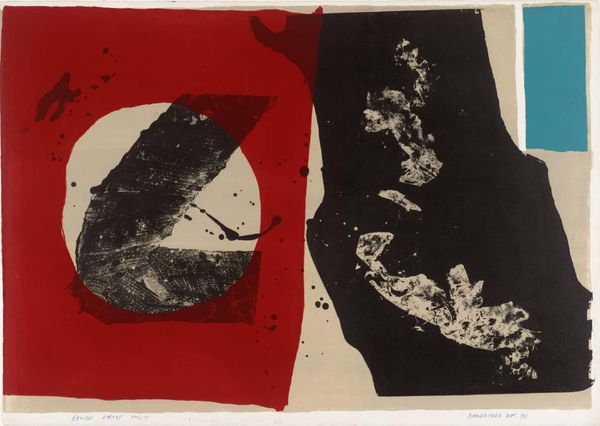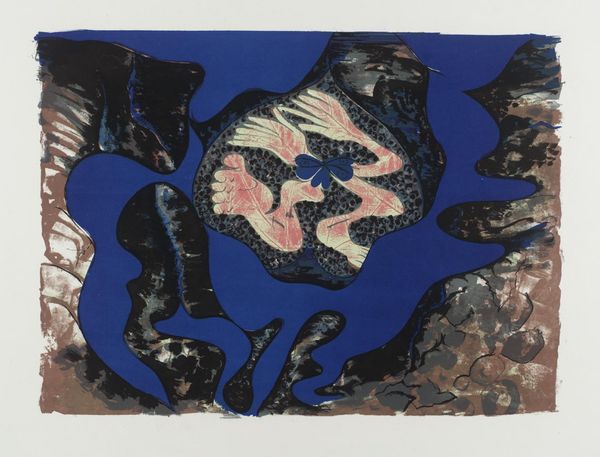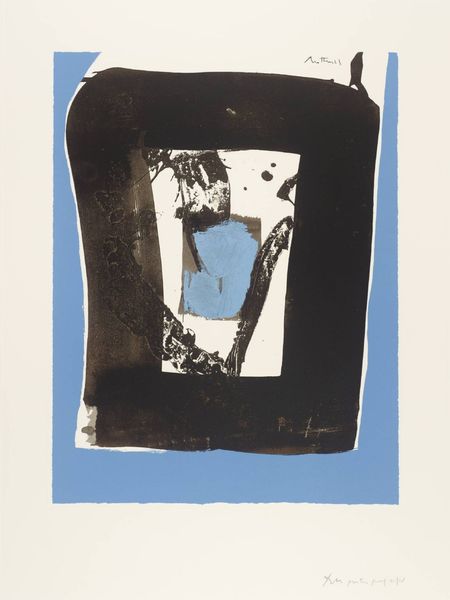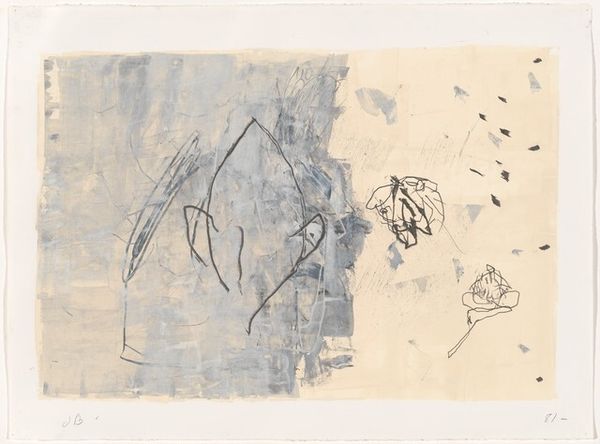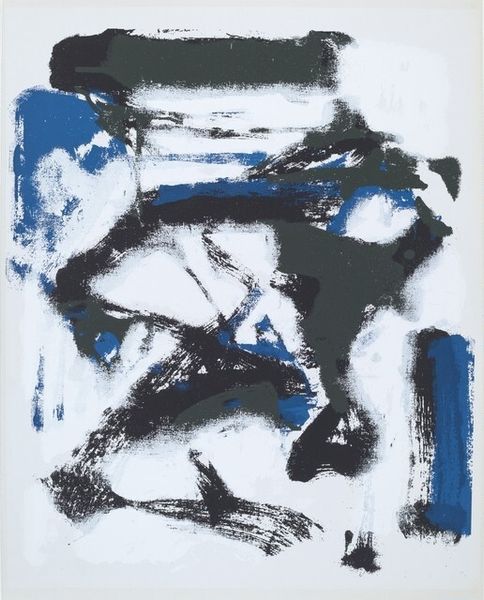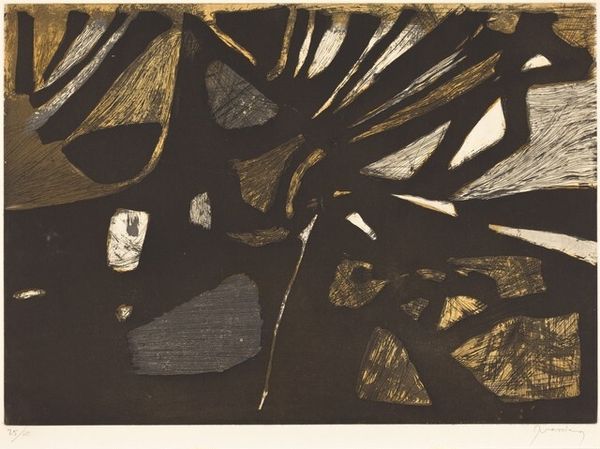
Dimensions: plate: 39.37 × 53.34 cm (15 1/2 × 21 in.) sheet: 59.37 × 74.93 cm (23 3/8 × 29 1/2 in.)
Copyright: National Gallery of Art: CC0 1.0
Curator: What grabs you first about Emil Schumacher’s untitled etching from 1989? Editor: Its raw energy! The black slashes against that vibrant blue feel almost violent, or perhaps cathartic. There's a primal force being unleashed here. Curator: Agreed. Thinking about his methods, you see Schumacher built up surfaces using unconventional tools and a range of industrial materials: printing, etching and gestural painting, sometimes even combining these to create texture. Editor: Which lends itself to decoding potential tensions during that tumultuous period; Germany, still wrestling with its past, experiencing rapid social changes at the fall of the Berlin Wall, feels palpable here. Curator: Exactly, his focus on materiality makes this more than just an abstract composition. Schumacher used a lot of materials from construction or from the street into his work, in some ways deconstructing this stuff, turning it into art. It blurs the lines between traditional "high art" and the gritty reality of everyday labor. Editor: I see that disruption too – a kind of post-war existential angst laid bare, especially for someone who lived through it. How did he reconcile personal expression with this very mechanical printing process? Curator: It is interesting to think of printmaking as labor. It requires planning and care in a very different way from throwing paint at a canvas, and Schumacher also embraces chance. But he was concerned with more than personal expression, instead searching after what he called an ‘image of the world’ – both geological and psychic. The earth and human feelings become fused in a form of post-war humanism. Editor: Which gives us access to the universal experiences of trauma and recovery – rendering that energy and tension, as I mentioned, into visual form! The gestures in the black lines feel deeply personal, etched onto this plate. I feel as though they are a witness statement or evidence of conflict. Curator: In the end, Schumacher prompts us to consider what we value, what constitutes "art", and whose labor is rendered visible or invisible in the process. Editor: And as an image for our age, how can we engage meaningfully with history to prevent repeating similar destructive cycles, and seek hope in fractured landscapes? A lot to absorb.
Comments
No comments
Be the first to comment and join the conversation on the ultimate creative platform.

